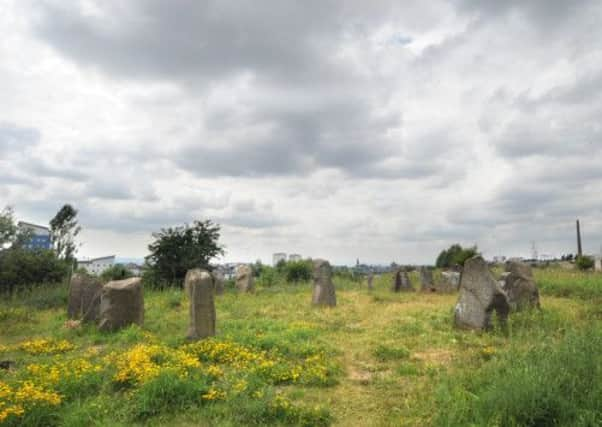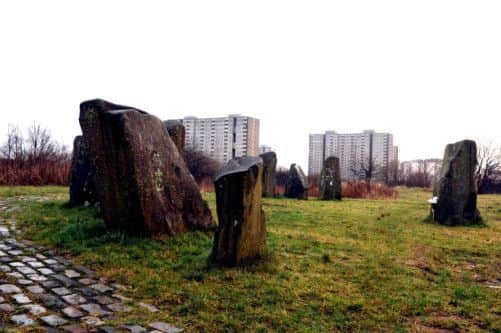Scots Monuments: Sighthill Stone Circle


It looks ancient, and as there has never been any signage explaining how it came to be, it is often taken as being so by those new to the area or too young to remember the day – March 20, 1979 – when the stones, whinstone quarried in Kilsyth, were lowered into position by navy helicopter, an operation codenamed Megalithic Lift.
Sighthill’s Stone Circle is, in fact, the result of the Callaghan government’s jobs creation programme; money was given to the local authority to create a large number of temporary posts, the idea being to get Glaswegians off the dole and doing interesting and useful work for the city.
Advertisement
Hide AdA young astronomy and science-fiction writer named Duncan Lunan, a Troon man, was put in charge of the parks department’s Astronomy Project, in which role he hit upon a plan to create a contemporary and urban equivalent of Callanish or Stonehenge – standing stones properly aligned with the sun and moon and thus able to mark the passing seasons.


It would be the first such structure to be built in Britain for around 3,000 years. He was given a map, an official car and a giant brass compass and went off to find a site for a stone circle. Trudging through gales and rain, through the winter of discontent, he visited Priesthill, Ruchill, Maryhill, Castlemilk and the Cathkin Braes and many other places, before settling on the present site, impressed by the sweeping vista of the skyline.
Lunan, now in his 60s, has led the campaign to save the circle from demolition during a planned redevelopment of the area. He is in talks with Glasgow City Council about relocating the stones elsewhere and incorporating them into some new astronomical structure.
Sighthill, however, is experiencing great change. The housing scheme, built in the 1960s, is being demolished. Since 2008, six of the ten multi-storeys have been brought down, one lies in rubble, and the others will follow before long.
Demolition is the first stage in a planned £220 million regeneration of Sighthill which will see, among other major developments, around 800 homes being built and a new footbridge across the motorway.
The council intends to create a “linear park” which will be slightly larger in size than is currently the case, but there are concerns that this total area will consist of a large number of relatively small parcels of greenery and that the park, as a whole, will lose its sense of wildness.
Advertisement
Hide AdAccording to the council, the plans will have significant economic, environmental and social benefits, and will see the north of the city reconnect with the centre to the advantage of both areas.
The land around the stones needs to be made level in order to allow construction to be carried out, and this will require a minimum of four metres of soil being removed from the southern side of the park. It is proposed that student accommodation and private housing be built there. “In effect,” says Tom Turley, assistant director of the council’s development and regeneration services, the site of the stone circle “will be somebody’s front garden, I would suspect.”
Advertisement
Hide AdAn online petition opposing the demolition of the stone circle has attracted almost 5,000 signatures, a motion has been lodged at the Scottish Parliament
A public consultation is planned although It is unlikely that the stones will be dug up before next year,
SEE ALSO: